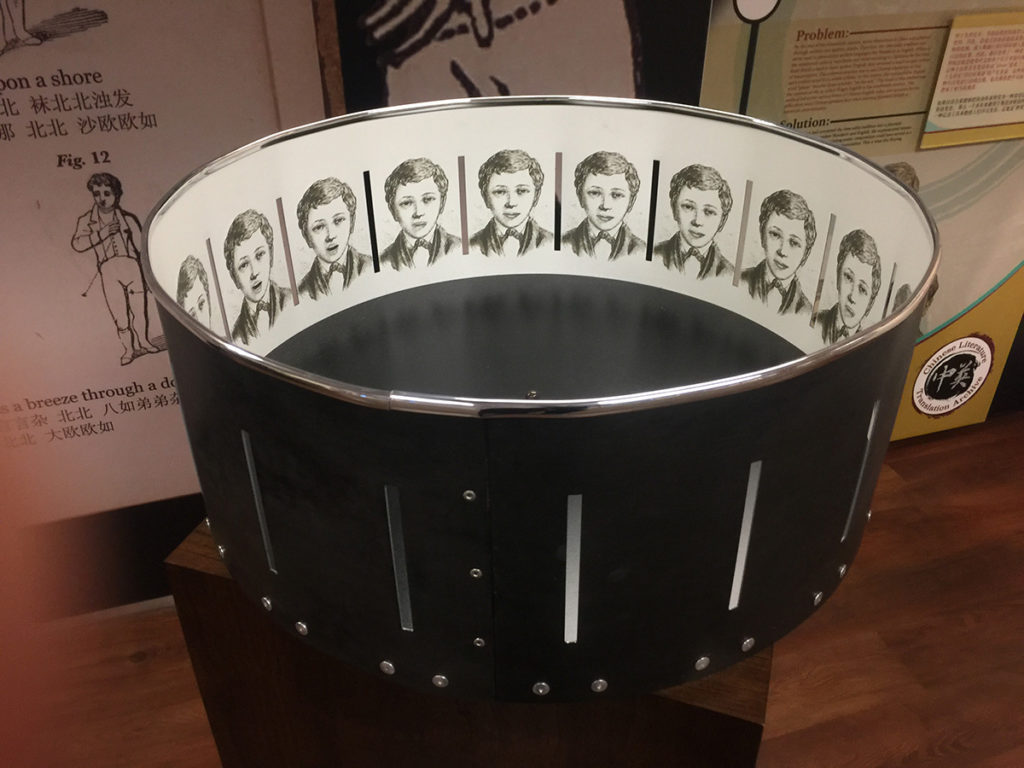The Persistence of Vision in Projected Film vs. Projected Video
With all the advances and advantages there are in digital video, there is one element of cinema it has yet to replicate. It’s a subtle, literally invisible one, and I have been looking for scientific documentation on it that conclusively proves my theory.
When you are watching motion picture film in a theater, or even in your home on a smaller gauge, you are in complete darkness for at least a third of the time. You’re not aware of it, because of the persistence of vision. There is a stop-start-stop-start of the projector’s rotating shutter, one that blocks the light from the screen so we do not see the movement of the film from one frame to the next.

It’s a facet of moving images that has been part of them since the days of zoetropes, phenakistoscopes, flip books and Mutoscopes over 120 years ago. There is a brief nanosecond of not seeing the image that blinks by in between each image viewed on those devices. The moving picture projector and camera had to be able to have a similar function.
Video, both the original analog and the current digital types, does not have the on-off change between each frame. With television 30 times per second (25 in Europe) each still image rescans to the next one, so that there is a constant light source and image being viewed. In movie theatres now, it happens 24 times per second, the rate that was locked in for sound film in 1926.
The principle is the same. The viewer is presented with a sequence of still images, that the brain synthesizes into a smooth moving image. That’s why it looks the same, whether it’s motion picture film or video.
I’ve wondered for years, though, what the effect of removing the other 24 moments of complete darkness per second has on the human brain. Is that what puts us in more of a dream state? Is that the unnoticeable aesthetic factor that people prefer of film projection over digital? It’s easy to say people just grew up on seeing films on film and they miss that projector sound. Or that there’s a nearly-imperceptible “look” that film has that die-hard fans miss.
A couple projectionists have told me they’d seen an article in which this exact facet of digital vs. film and its effect on the viewers’ brain has been studied. I have not been able to find this article. Perhaps you know where it is or can find it.
I find it much easier to nod off while watching projected video. The rise of people distracted by their phones in a movie screening could be easily attributed to the rise of social media’s popularity.
But I also think that, at least in movie theaters, we are not engaged in the world of the film as much, because our brains are not working the same way, filling in that darkness by tricking us into thinking it’s not there. That the constant light source and image disengages us just a tiny bit, but just enough that we don’t engage the same way, don’t inhabit the same kind of dream state.
What would be ideal would be to find a way to reintroduce that on-off-on-off of the projector’s shutter wheel in digital projection. If there are projectors than can show movies at 48 frames per second, perhaps half of those frame could be blank and the other 24 the film itself.
This would be great, as more and more often, the image quality of what can be presented digitally not only equals that of film, but in some cases (especially when compared to some 16mm prints) surpasses it.